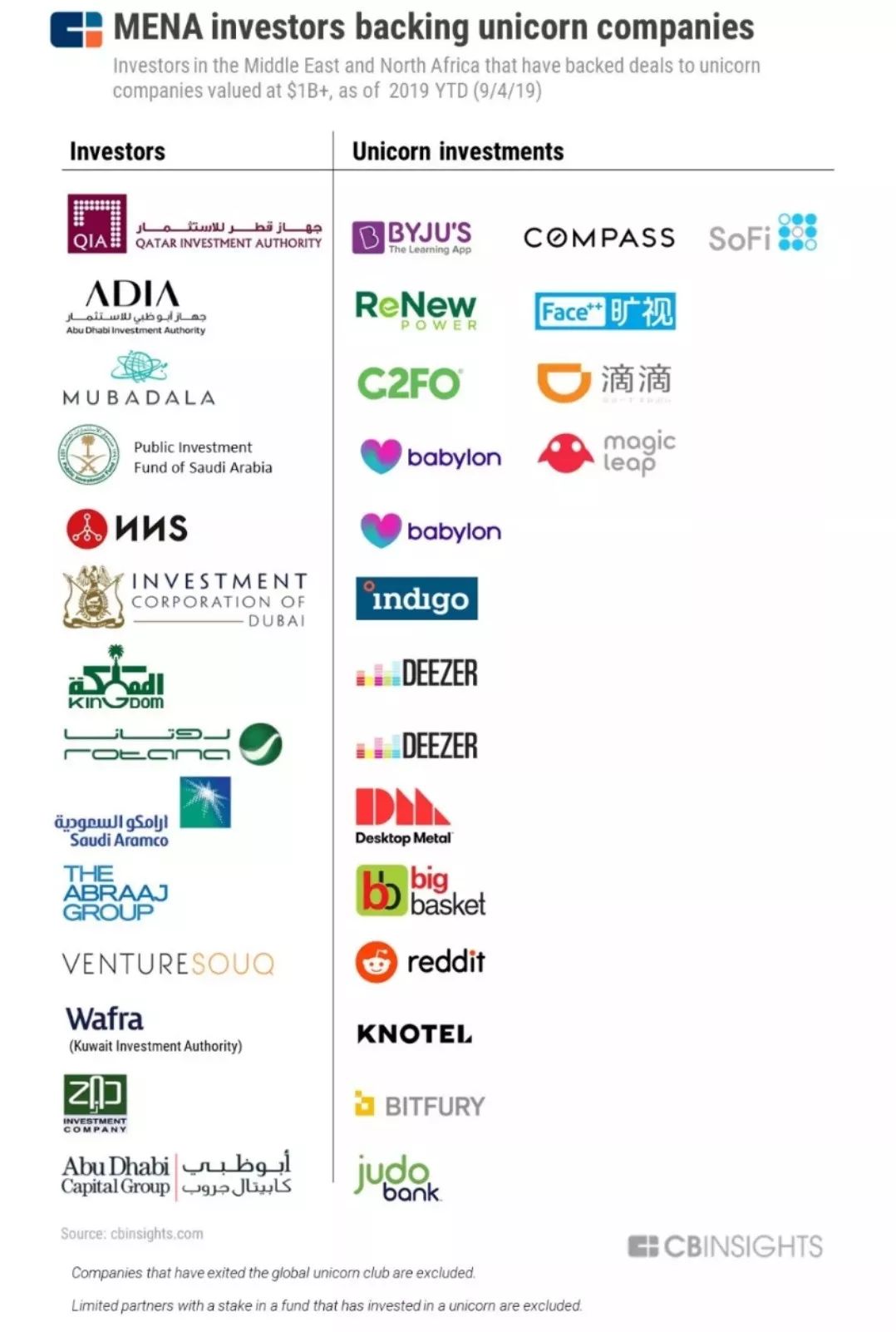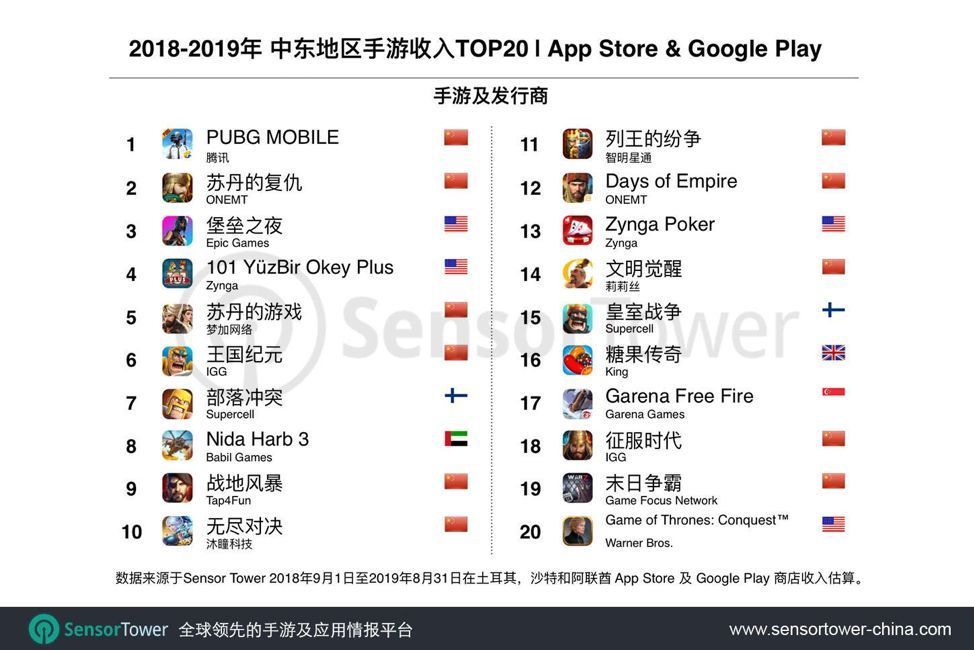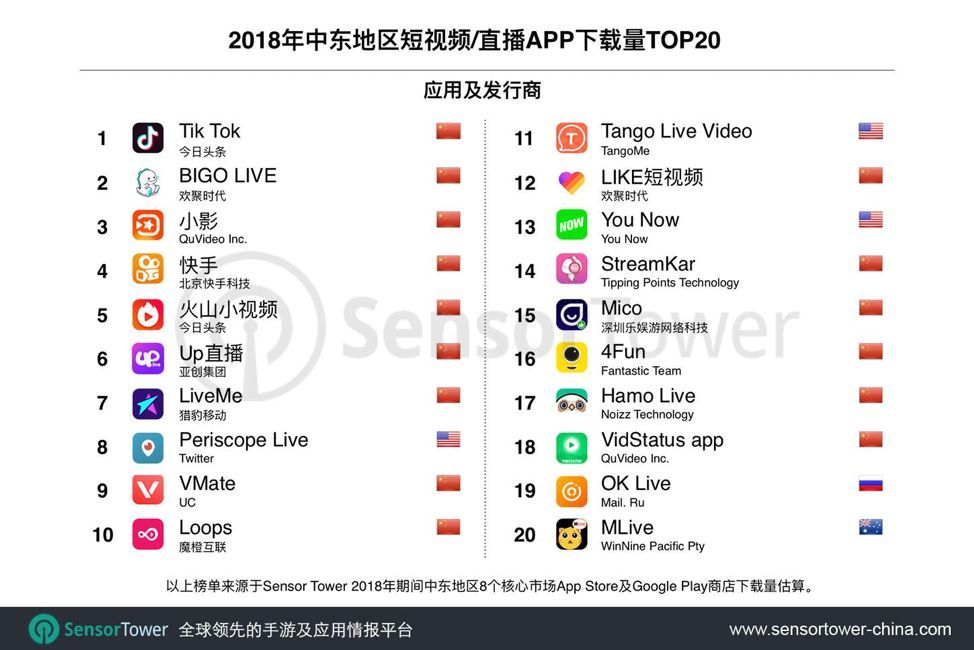The pioneers of Chinese entrepreneurship in the Middle East have already earned the first pot of gold.
Editor’s note: This article is from the WeChat public account “Deep ringing” (ID: deep-echo), author Ma Xiaojun.
In 2019, the domestic market ushered in an important turning point: the total number of mobile Internet users peaked, the growth dividend officially ended, and the domestic mobile Internet market was transferred to the stock competition stage.
A new stage of development, sailing to the sea has become an important choice for Internet entrepreneurs.
Based on past experience, we have already learned about the diversity and complexity of overseas markets. During the National Day, the team has selected a large number of materials and market front-line cases to introduce Africa, Southeast Asia, Latin America, India, The core trends of the major destinations in the Middle East and the United States help readers explore the competitive differences in different markets and the nature of user needs, and identify opportunities.
This is the 005th article of the Global Nuggets Series.
Core Points
▪The Middle East market is a market that has both demographic dividends and high net worth values.
▪ In the past few years, Chinese entrepreneurs have entered the Middle East market in games, live broadcasts, and e-commerce.
Whether there are many cultural restrictions in the Middle East market, in the eyes of practitioners, turning cultural restrictions into market demand will also become a new opportunity for this market.
What is the first thing that comes to mind in the Middle East?
Oil, local tyrants, the Golden Summit Mosque, the seven-star sailing hotel in Dubai, or the towering Burj Khalifa?
In fact, the Middle East is much more than that: in the past few years, the Middle East has become one of the most important markets for Chinese Internet entrepreneurs. Games, live broadcasts, short videos, cross-border e-commerce… Here, Chinese entrepreneurs have found a lot of new opportunities for the Nuggets in the fast-growing Middle East mobile Internet market.
But at the same time, the complex geopolitical situation in the Middle East and the religious and cultural environment have left many people discouraged. For Chinese entrepreneurs, will the Middle East be the promised place full of opportunities and adventures?
The fast-growing Middle East mobile Internet market
Definitions and boundaries are different when discussing the Middle East market in different areas.
In the mobile Internet market, the Middle East mainly includes the six Gulf States including Saudi Arabia, United Arab Emirates, Qatar, Kuwait, Oman and Bahrain.
(GCC)
And more than a dozen countries, including Turkey, an important emerging market in Europe and Asia. Due to the similarity of history and market characteristics, when talking about the Middle East in the international market, Egypt and the Middle East market in North Africa are often collectively referred to as MENA.
(Middle East and North Africa)
.
According to the World Bank’s 2018 data, the total population of the MENA region reached 450 million, and the total GDP reached 3.6 trillion US dollars.
In the GSMA 2018 Men’s Mobile Economy Report, there were a total of 375 million independent smartphone users in the 2017 MENA market, which rose to 381 million in mid-2018; in Saudi Arabia, In countries such as the United Arab Emirates, the penetration rate of smartphones can reach more than 70%.
Compared with other regional markets,
The Middle East market also has a high average purchasing power that deserves attention.
Compared with the high active and low ARPU in the Indian market, the industry generally believes that the ARPU of mobile users in the Middle East market has reached about 20 US dollars, which is quite close to the level of 20 to 30 US dollars in developed markets such as North America.

Internet penetration rate in the MENA region in the GSMA report
The huge population base and good economic base provide opportunities for the development of this market. Hu Dan, general manager of Alibaba Cloud International Middle East and Africa, mentioned in an interview that despite the fragmentation of the country, there are still more than 300 million people in the Middle East with a single-language demographic dividend, including Saudi Arabia. Gulf countries with high spending power.
At the same time, in addition to good purchasing power, the Middle East market has a more attractive entrepreneurial feature, that is, there are a large group of young users. Gobi Venture Capital Investment Director Tu Zhiyue once introduced in public sharing, statistics show that 35% of users in the Middle East are younger than 24 years old, of which the median age of Saudi Arabia is 31 years old, and the median age of the UAE is 34 years old. Young users have a better acceptance of new things such as mobile Internet and social networks, which also cultivates a better user soil for the development of the mobile Internet in the Middle East.
Compared with Southeast Asia and India, where there are many languages and high operational challenges,
The linguistic unity, high spending power and young user structure in the Middle East have given this market a considerable potential for growth.
In the past two years, another one that may become a new opportunity for the development of the Middle East market is the 5G wave that is currently coming. According to the GSMA report, GCC countries generally have a strong interest in 5G applications, and several countries hope to guarantee the promotion of 5G mobile services in the next two years. At the same time, the GSMA also expects that
In 2025, there may be 15 countries on the entire MENA area to launch 5G mobile services.
Early venture capital is on the rise
But the Middle East market, which has a good foundation for mobile internet development, can be said to have been quiet for many years in the field of venture capital, and there is a strong local characteristic behind it.
First, there are fewer Internet companies in the Middle East market that are currently on the market. Compared to emerging markets such as Southeast Asia and India, where there is a large influx of hot money, the overall company’s valuation is lower.
Second, the entrepreneurial atmosphere in the Middle East is not so strong, and early venture capital is not so active. On the contrary, sovereign funds and corporate investment are more active in the Middle East.
There are also many unicorns in the world.
For example, Saudi Arabia’s sovereign wealth fund once invested $3.5 billion.Uber; Mubadala, one of the world’s largest sovereign wealth funds, has also participated in the investment of 4 billion US dollars with the Softbank Group; another sovereign wealth fund, the Abu Dhabi Investment Authority of the United Arab Emirates, has invested in the upcoming domestic labor. Smart business contempt.
However, in recent years, the Middle East venture capital circle has also ushered in some inflection points.
In the first half of this year, Uber acquired Dubai’s taxi startup Careem for $3.1 billion, inspiring the entire Middle East venture capital market, media reports, after the most well-known startup acquisition in the Middle East market was Amazon acquired the local e-commerce Souq, but the price was only 580 million US dollars. In contrast, Careem’s high price sells, and the impact and incentives for the entire Middle East venture capital market can be imagined.
The venture capital market in the Middle East is indeed growing rapidly. According to the statistics of Moteng Venture Capital, there were only 14 VC institutions in the Middle East and North Africa region in 2010. The total VC investment amount was US$26 million in the year. By 2016, it has rapidly grown to more than 200, with a total investment amount of 8.33. One hundred million U.S. dollars.
Chinese capital is gradually beginning to appear in the Middle East market.
In the first half of this year, Gobi Ventures and Saudi Arabia’s 8 Point Capital announced that they will set up a $50 million cross-border fund to invest in Chinese and Middle Eastern startups with the support of the Saudi state-level venture capital fund, Saudi Venture Capital Company.
With the gradual overweight of the mobile Internet infrastructure and the gradual availability of funds in the venture capital market, the local mobile Internet and entrepreneurial venture capital in the Middle East market will usher in a new wave of development.
Middle East Market: Love “play” and love “buy and buy”
The fast-growing Middle East market has attracted the attention of global entrepreneurs. The Middle East market has also shown strong consumption power in the field of pan-entertainment: the current YouTube daily broadcast volume in the Middle East is the second largest in the world, and Facebook’s embedded video playback volume is twice the global average..
One of the most attractive businesses in the Middle East is the game.
According to a September report from a third-party data agency, the Sensor Tower, the total revenue of mobile games in the Middle East in the App Store and Google Play in the past year reached $836 million. Among them, Turkey, the United Arab Emirates and Saudi Arabia have a total income of 647 million US dollars, accounting for 77.4% of the income of the Middle East.
Moreover, the Sensor Tower data also shows that the Turkish, UAE and Saudi mobile game markets are still in a rapid development stage in the past year, with a relatively high growth rate. In August 2019, the total revenue of the three market mobile games reached US$62 million, up 40.9% from the US$44 million in September 2018.
Among the three markets, Turkish mobile game revenue ranked first in the Middle East, reaching US$310 million, accounting for 37.1% of the total income of mobile games in the Middle East. Secondly, Saudi Arabia and the United Arab Emirates, with revenues of $203 million and $134 million, respectively, accounted for 24.3% and 16% of total mobile game revenue in the Middle East.
The development factors of these markets are not the same:
In the past few years, the development of the game market in Turkey has benefited mainly from the local demographic dividend. The game market in Saudi Arabia and the United Arab Emirates is still driven by the high R players who are capable of high gold.
It is also worth noting that there are currently a handful of games from China in the Middle East: Sensor Tower data shows that in the top 20 mobile game revenues in the Middle East, there are as many as 11 Chinese mobile games, accounting for Top20. 69% of total income.
Among them, Tencent’s “PUBG MOBILE” accounted for the top of the list with 100 million US dollars of water, the income of the Middle East also accounted for 18.1% of the total overseas revenue of “PUBG MOBILE”, the Middle East market to domestic game manufacturers to the sea The importance is also evident.
In addition to games, live broadcast is also a field where Chinese entrepreneurs have already made a big gain in the Middle East market.
Sensor Tower pointed out in the “China Short Video/Live Application: Overseas Markets in 2018” report that the Middle East in 2018In the short video/live application Top20 revenue list, there are as many as 15 apps in China, with a revenue share of 95%.
In the field of live broadcasting, the advantages of the Middle East language unification are highlighted. The China Net has reported that Dubai Tycoon has spent a lot of money on Moroccan models, and Saudi Arabia’s story of sponsoring Egyptian students is not uncommon on the live broadcast platform in the Middle East. Even the live broadcast platform has used the national pride of each country to launch a competition similar to “regional heroes”, so that the local tyrants can reward the female anchors in the competition with the top score.
Under the active local tyrants, the extremely high online payment thresholds in the Middle East have not stopped the development of the live broadcast platform. Many local tyrants are playing a list of supported anchors, even bundles. Cash, with fully armed bodyguards to recharge the live platform office.
However, in the past few years,
The live broadcast market in the Middle East has gradually been killed by the Blue Ocean, and there is no shortage of big manufacturers.
According to Sensor Tower data, in the 2018 Middle East short video/live application TOP20 list, China APP accounted for 15 seats, Vibrato overseas version Tik Tok, YY’s BIGO LIVE, and Xiaoying, fast, Cheetah’s Live.Me and other Chinese products have performed well, and even until the 8th place, the Periscope product of Twitter products appeared. This is a performance in the case of Facebook and other European and American companies in the Middle East social media market. Not bad.
In addition to the field of pan-entertainment In addition, in the Middle East market, which has high consumption power and can buy and buy,
E-commerce is also a hot field in recent years.
A certain degree is hindered by the online payment threshold. The good smartphone penetration rate in the Middle East market has not been effectively converted into the purchase rate of e-commerce.
Gochi Ventures Investment Director Tu Zhiyue once mentioned in a share that the penetration rate of e-commerce in the Gulf countries in 2017 is only 3%, which is quite different from China’s nearly 20% and the US’s 15%.
However, as opposed to low penetration, it is a high growth rate in the Middle East e-commerce market. Google and Bain Consulting recently jointly released the 2019 Middle East E-Commerce Report, which also pointed out that since 2014, the Northeast and NortheastNon-e-commerce composite annual growth rate
(CAGR)
Has reached 25%.
The industry giant has also turned its attention to this market.
As early as 2017, Amazon acquired Souq, the first local e-commerce provider in the Middle East, for $580 million, and officially launched the merged Amazon Emirates station in May this year. After the merger, Amazon has withdrawn from Amazon membership and other services at the UAE site, including low-cost membership fees, as well as Amazon’s custom-free, non-standard, day-to-day delivery, online viewing or downloading of Amazon paid videos. According to reports, with the strong support of Amazon, Souq switched to Amazon Emirates station and traffic surged, with a maximum of 16 million views.
Domestic giants will naturally not let go of this market. In August last year, Alibaba had invested in Trendyol, a Turkish fashion e-commerce platform founded in 2010. At the same time, there have been media reports this year, Ali’s cross-border e-commerce platform, AliExpress, has begun to cooperate with domestic cross-border e-commerce logistics service providers to build a logistics service system for Turkish exports.
In addition, there are also cross-border e-commerce platforms such as Club Factory, jollychic, and SHEIN in China, which have already played an active role in the Middle East market.
Native players are not to be outdone.
The founder of the Middle East local e-commerce giant Noon, Alabar, said at the sellers’ celebration in September: “There is 400 million consumers in the Middle East, but there is no big local e-commerce platform. This is unreasonable. We have Responsibility to protect the local economy and prevent international giants from occupying our home market.”
Founded in 2017, Noon is the second entrepreneurial project of founder Alabar. Alabal himself is a successful real estate developer. The world’s tallest building, Burj Khalifa, is his Aimar.
(Emmar)
The real estate company built it, he also has a lot of investment in the e-commerce industry before the founding of Noon. Noon is the ambition of Alabal to bring Saudi Arabia’s sovereign wealth fund.
Alabar plans for the future In the year, Noon covered the entire Middle East and North Africa market, and the ratio of e-commerce penetration in the Middle East was 2%.
Increased to 14%
So the offensive is so astounding: not only in Alaba




